I tested Apple Emergency SOS via Satellite - and it could save a life
You may never need it but...

Perhaps only Apple could invest nearly half a billion dollars in an iPhone 14-based system most will never use. It's something that makes its now-available Emergency SOS via Satellite system on all iPhone 14 handsets that much more impressive.
Seriously, how often are we lost, incapacitated, hurt, or stranded? Okay, it does happen. Better question: How often are we any of those things outside of cellular coverage? Right, this is an edge case, but it's also a potentially lifesaving one.
What Apple has done here is a big deal. It leap-frogged smartphone competitors by putting satellite connectivity in handsets millions of people now own. This includes the iPhone 14, iPhone 14 Pro, iPhone 14 Plus, and iPhone 14 Pro Max, and the service is free (for two years, at least).
When Apple launched the iPhone 14 back in September and it quickly joined the list of our Best Phones, it gave me a live demonstration of the capability, but I couldn't touch the phone or really dig in in any substantial way. Plus, we couldn't test Emergency SOS via satellite on our review units because the service still wasn't live.
Apple officially turns on the Globalstar satellite services-supported system today (Nov. 15) but gave me a hands-on preview a few days in advance.
Unlike the last demonstration, this one would be self-guided but still with a couple of limits. Because the system uses the traditional 911 service, Apple had to set me up with phones that can't call the traditional emergency services. Otherwise, the experience was completely live with real satellites, real Apple "relay agents," and a real text-based conversation over satellite communications.
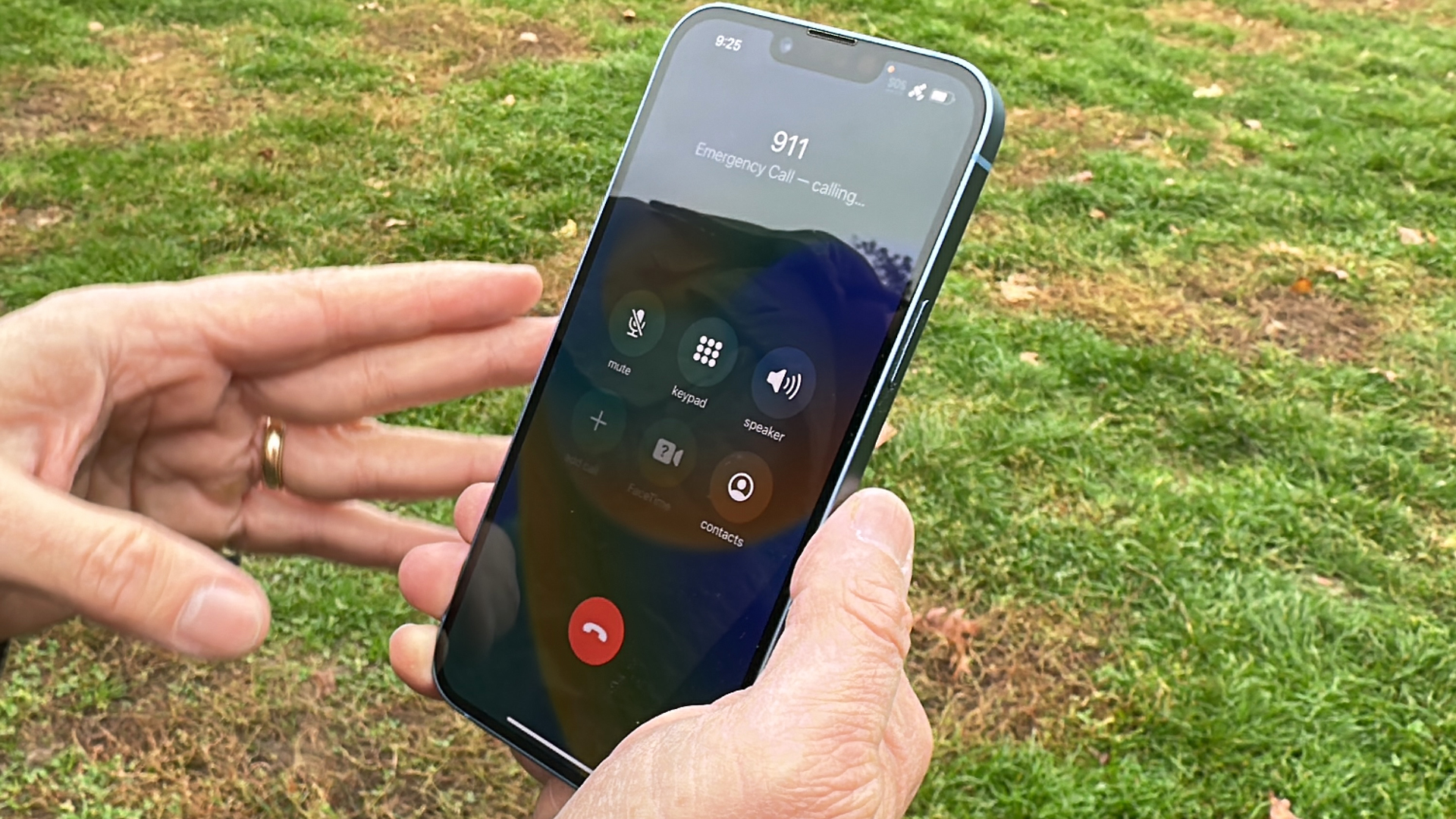
For this test, Apple invited me to Prospect Park in Brooklyn where we could create our own emergency scenario. I arrived early and started scoping out the situation, trying to imagine how I could fake an emergency among countless runners, bicyclists, and an untold number of dogs and their walkers.
Sign up for breaking news, reviews, opinion, top tech deals, and more.
Surely, if I got lost in the sometimes dense woods of the 526-acre park, one of these pups would quickly sniff me out.
In any case, I decided to suspend disbelief for the sake of my Apple Emergency SOS via Satellite trial.

There are, it turns out, a few different usage scenarios for this service. The first is the obvious emergency situation that starts with dialing 911, but more on that later. The other two are using it as a low-earth orbit check-in system via iOS's Find My app, and the third is a basic live demo through settings to help train you on the ins and outs of using Emergency SOS via satellite.
Our plan on this day, though, was to do an "emergency."
To understand how Emergency SOS via Satellite might change your fate in an emergency, you have to know when you will and won't use it. Your satellite-service-equipped iPhone 14 will be the first to tell you if this is the moment to contact an orbiting device.
In my scenario, I was faking being lost in the park (as leashless dogs ran around me and people casually strolled by).
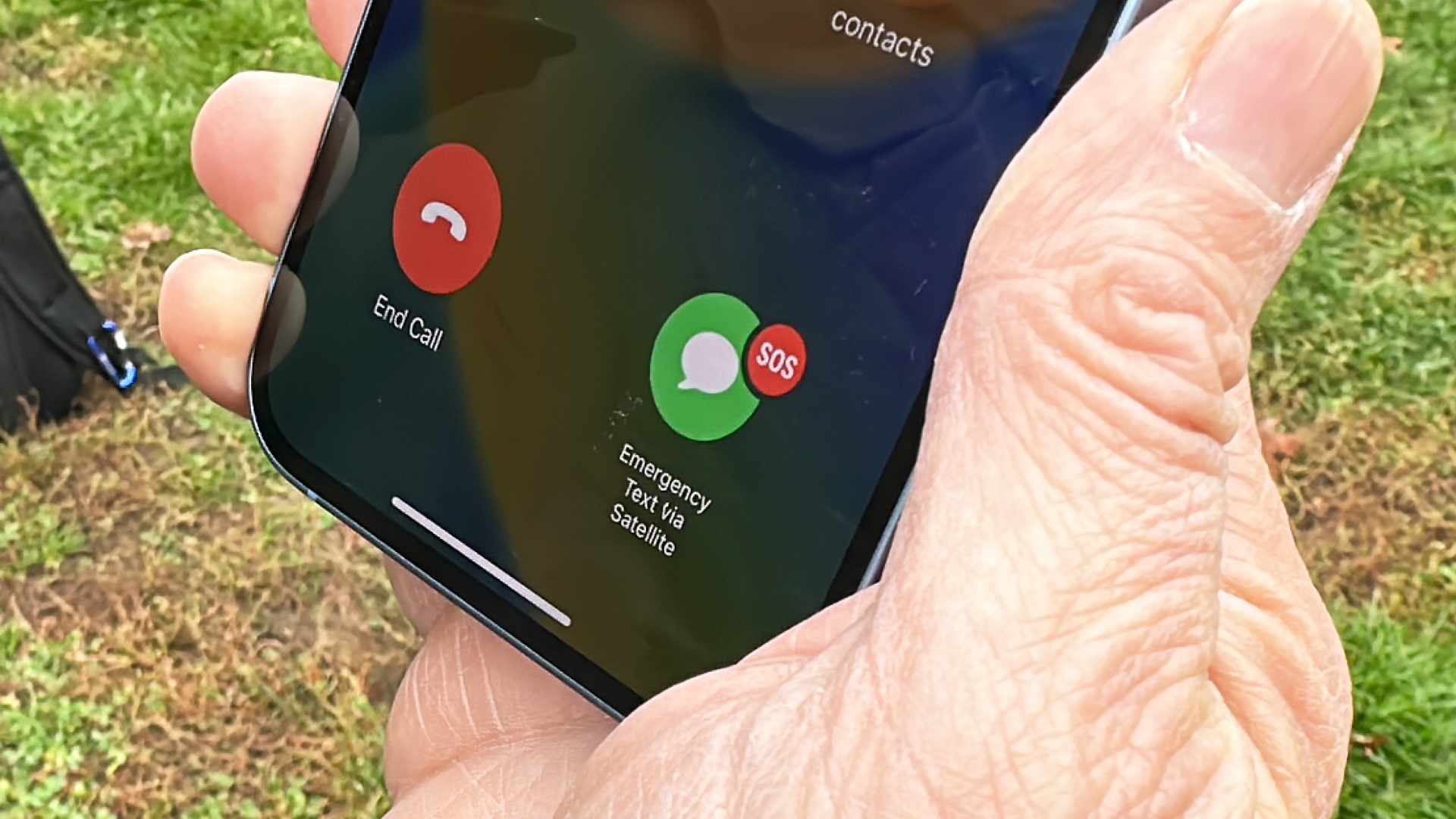
I looked at the phone Apple handed me, which was set up to route 911 calls away from actual dispatchers and to its own service. Even before I dialed for help, I noticed the "SOS" that appeared in the upper right-hand corner of the iPhone 14 screen. It's only there when there's no cell and Wi-Fi service available. Next to it, I could see a tiny satellite icon, which indicated the availability of satellite connectivity.
If I were indoors (and then not lost), that symbol would not appear and I could not connect to any of the satellites.
I dialed 911 and waited as it seemed, at least at first, nothing happened. Then the screen changed and in the lower left-hand corner a text message symbol with a red "SOS" on top of it appeared. Right below it was the text, "Emergency Text via Satellite."
I selected that, which instantly led me to a new Emergency SOS via Satellite screen. It reminded me to:
"Be outside to get a connection."
"Messages will take longer to send."
"Answer questions to help get a quick response."
These are crystal clear instructions, which seem appropriate for someone in dire straits.

At the bottom was a large green button with "Report Emergency" on it. In smaller text above was a reminder that "Your location and Medical ID may be shared."
Now, under normal circumstances, that might be cause for alarm, but as a lost person, possibly with an injury, this is exactly the kind of information I want delivered to first responders.
On the Medical ID front, Apple can only share whatever information you've already entered into your iPhone. If you never filled out that part of your Health App profile settings, then Apple will have nothing to share with the medical professionals arriving to save and treat you.
I was still "lost," so I hit the big green button. This immediately launched a short Q+A session with the system where it asked about the nature of the emergency:
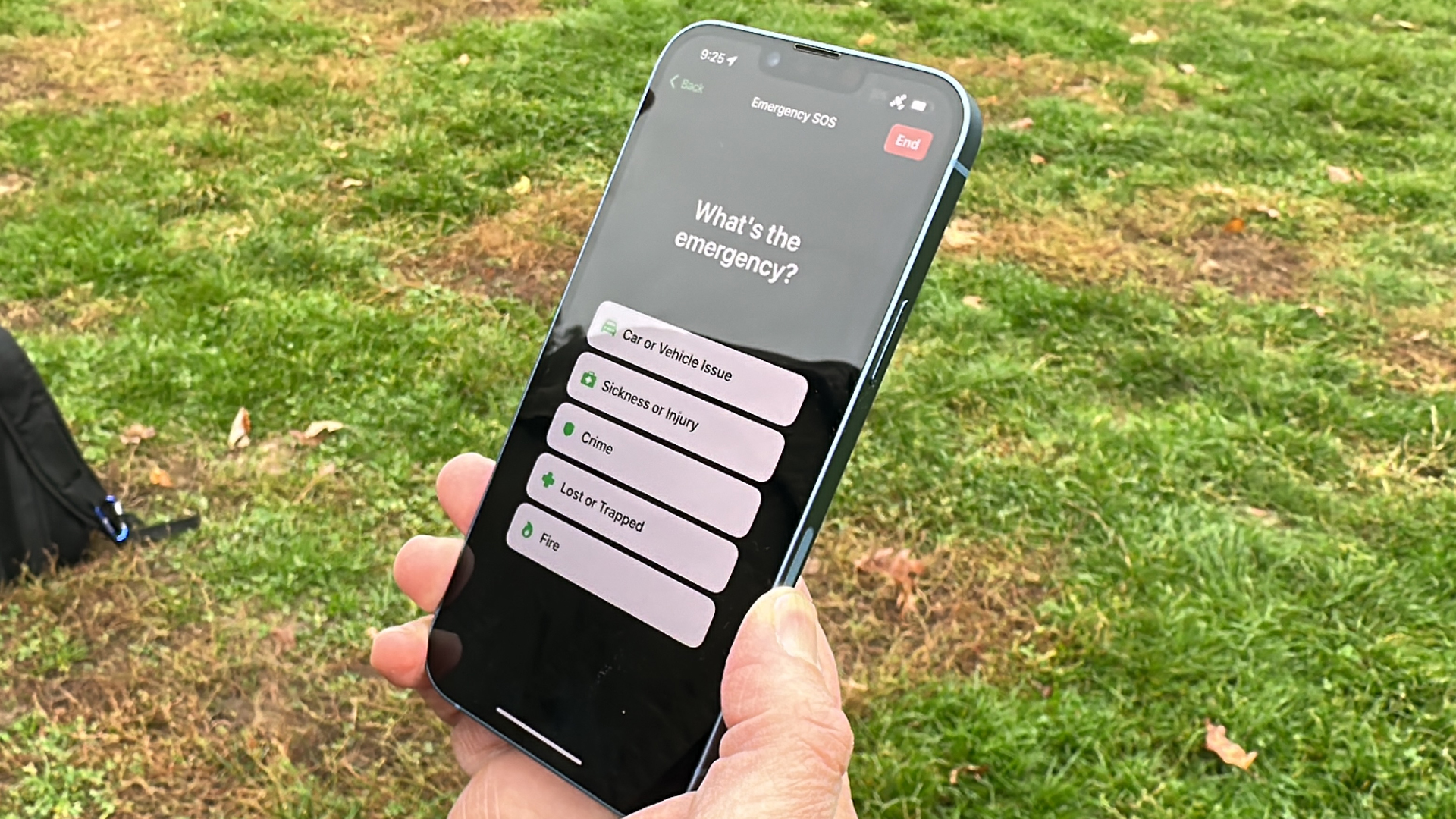
- Car or Vehicle Issue
- Sickness or Injury
- Crime
- Lost or Trapped
- Fire
After reading the list, I felt somewhat lucky to only be lost and not injured or trapped in the middle of a forest fire.
But Emergency SOS via Satellite gets even more granular. Next, it asked me "Who needs help?"
- Me
- Someone else
- Multiple People
This was followed by, "Is anyone injured?" I answered "No."
Then, it asked me to describe the emergency as:
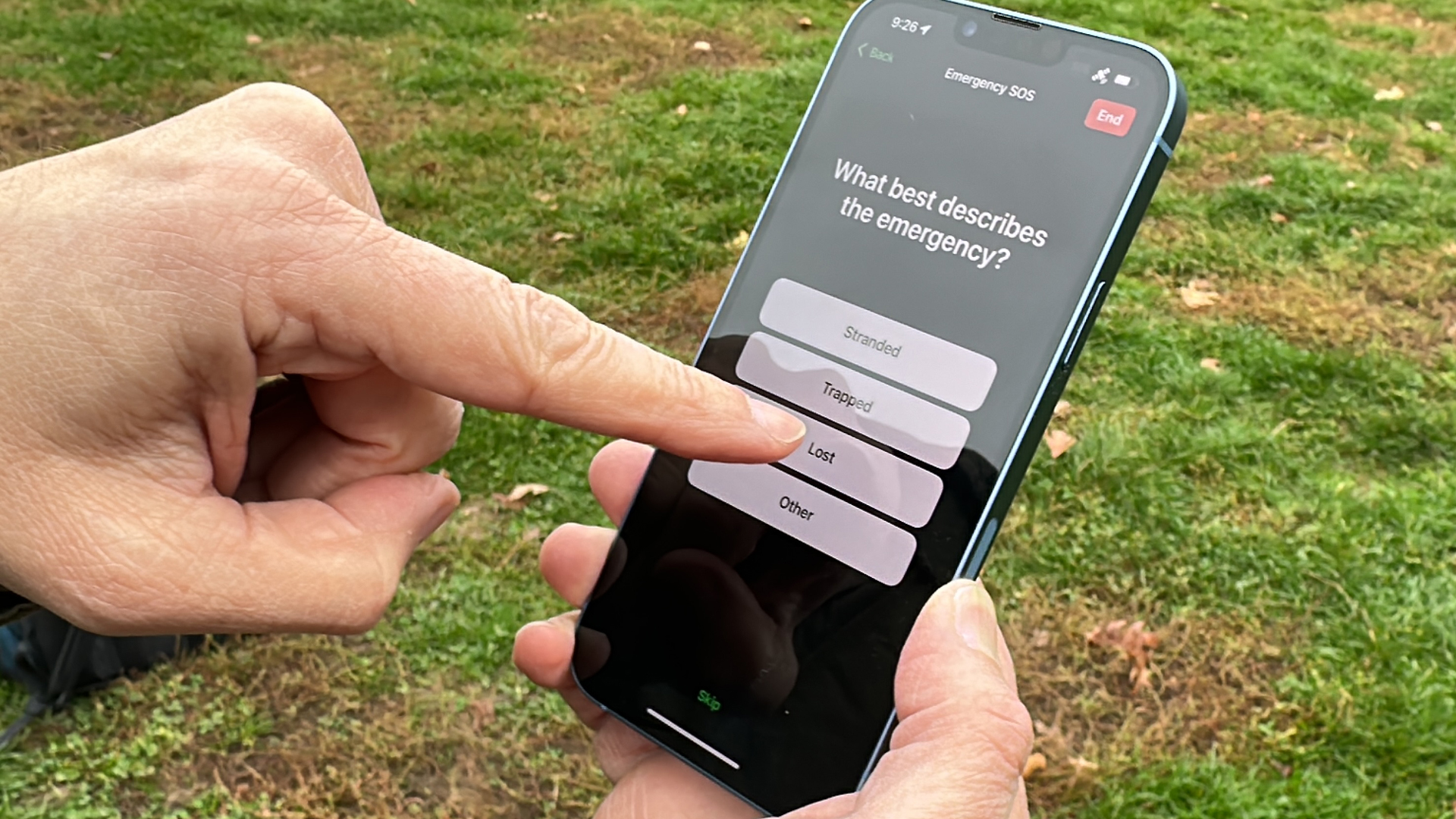
- Stranded
- Trapped
- Lost
- Other
The last question dug into the emergency environment. "Do any of these apply?"
- Steep terrain
- Water
- Cave
- None

To raise the stakes a bit, I answered "Steep terrain."
While this may sound tedious, all of this detail is designed to help emergency responders find you and properly prepare to treat and save you.
After that, Apple's Emergency SOS via Satellite does a very smart thing: it offers to notify your emergency contacts. Once again, the value of this totally depends on whether you previously entered emergency contacts into your iPhone. If you did, your contact will be notified and they will see the entire conversation between you and dispatchers and/or Apple's emergency relay center.
For the record, my personal iPhone has both my Medical ID info and my emergency contact (my wife), but I was using Apple's phone so, in my fake emergency, the iPhone was sending word to an Apple contact standing two feet away from me.
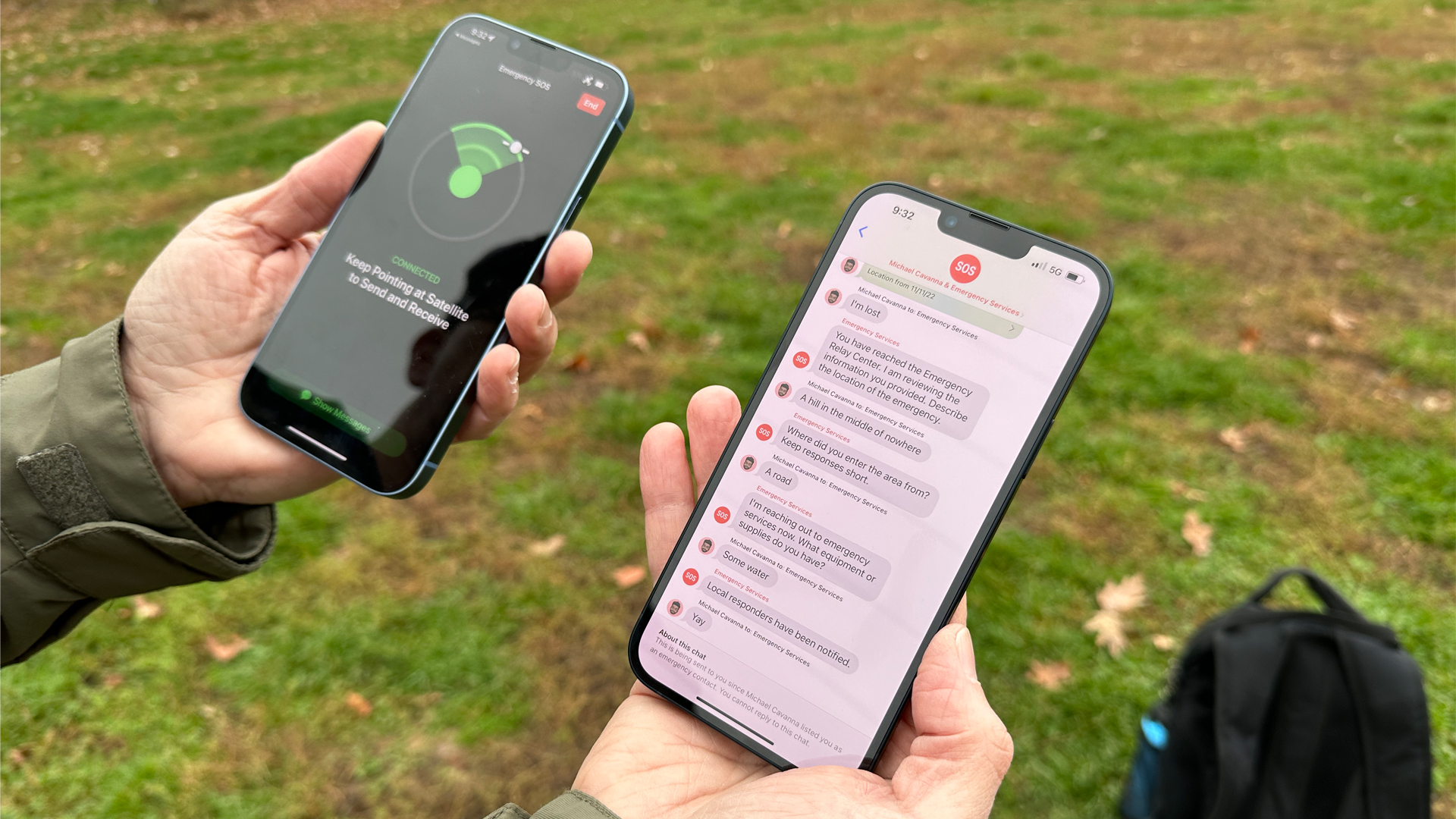
As soon as I allowed the phone to send word to my emergency contact, it switched to a new screen that guided me to turn until I was positioned to connect with the nearest orbiting satellite. The on-screen guidance could not be clearer.
Now, if I were truly injured and lying on the ground, it might not be so easy for me to turn left or right to find a satellite, but I imagine I would find a way. When the phone locks onto a satellite, the tracking display turns green, and the screen switches to a modified Messages interface.
At the top is a persistent guide reminding you to keep the satellite in range (if it goes out of range, the phone will instruct you to turn left or right to find another satellite). Below it, I could see the details of the text message that was going out to dispatch or Apple's relay center. If the former can't accept a text message, it goes to Apple relay. In our scenario, that was the only choice.
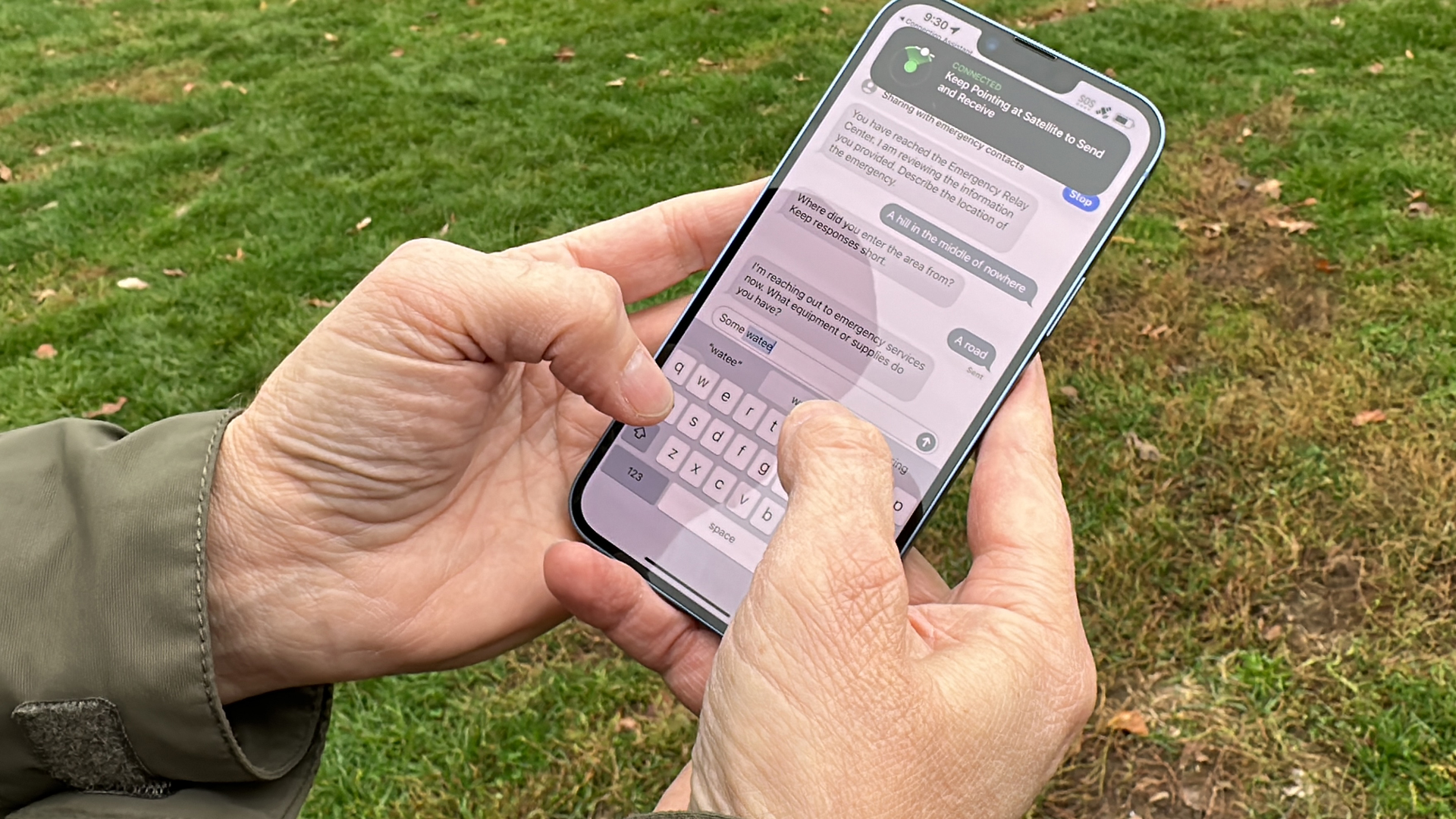
Apple wouldn't tell us the size of its emergency-services-trained relay team, but there was no indication that this is a slow rollout with a small team.
In the top portion of the screen, I could see the progress of my initial call for help. It's a lot slower than traditional text messages. There's no getting around the inherent latency issues of satellite communications, but Apple has mitigated the issue somewhat by using a compression algorithm to reduce text message sizes by up to 3X.
Within a few moments, which I imagine might be scary and agonizing for someone in real danger, I had a message from Apple's Emergency Relay Center. They were reviewing what I sent and asked for a description of my location.
I kept it purposefully vague, telling them I was on a hill in the middle of nowhere. I figured that if I was really lost, I wouldn't have a great answer to that question. Then I watched as that answer slowly made its way back to the relay center.
The seconds were ticking by and the unleashed dogs surrounded me.
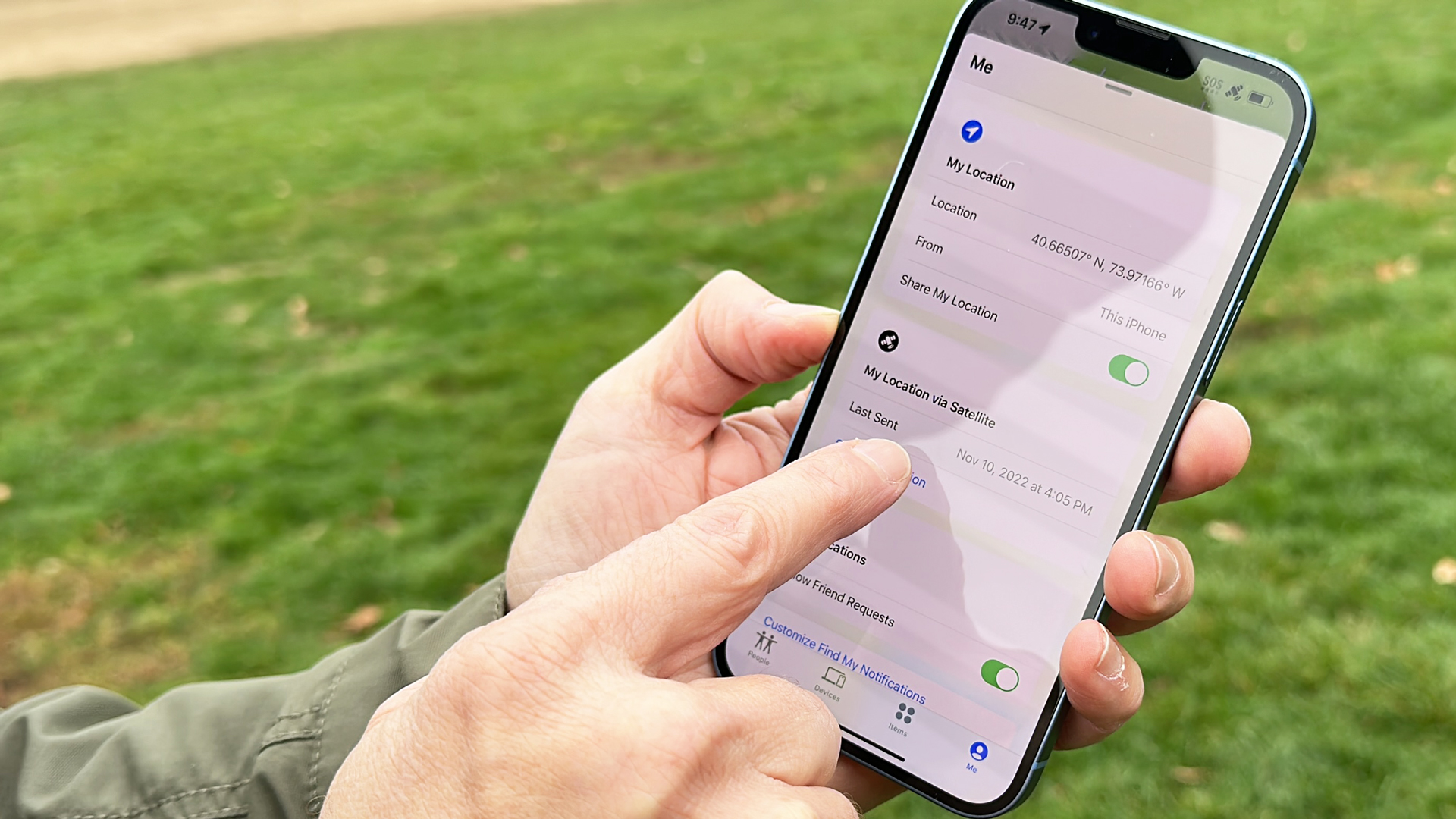
Apple's relay personnel returned within a minute or so with another question about where I entered the area. But it also reminded me to "Keep my answers short."
Now, that wasn't them being rude. That's Apple helping me. Apple's relay team understands the satellite's limited bandwidth. Short answers from me will get to them that much quicker and help lead to a speedy rescue.
As Apple's emergency relay center was speaking to me, they were simultaneously reaching out to the nearest emergency dispatcher. This meant there'd be no delay in someone heading in my direction. They also asked about what equipment I had on me. I replied, "water." See? A nice short response.
Finally, I was told local responders had been notified. I would soon be found and brought home.

Since I was never lost or in any danger, the stakes never felt that high, but I guarantee you that we will soon be hearing stories of someone using Apple Emergency SOS via Satellite to be rescued from Canada's Far North or El Capitan.
You don't need an emergency to use your iPhone 14's satellite services. For people who like to go off the grid but also want family members to know that they're okay, they can use it with the Find My app to send you their location details.
I did this with the iPhone 14 and it was easy, I simply opened Find My, selected "Me," and then slid up the draw to reveal a new Send my location via satellite option.
With it, anyone with whom I normally share my location via the iPhone would get the notification that I'm not lost, just hiking in the middle of Prospect Park.
Finally, there is a way to see how the service works without an emergency notifying everyone of your location. You can open settings, scroll down to Emergency SOS via Satellite, and then it will guide you to find a satellite and text people over it. Through this, you'll be able to understand what it's like to locate and maintain a connection to a satellite and just how long it takes to text someone through this communication system.
As I said, this is not a tool for everyday use, but if you or someone you know or love is lost, hurt, in danger, or just needs to be found but cannot connect to the grid, Apple's Emergency SOS via Satellite is a potential life and anxiety saver.

A 38-year industry veteran and award-winning journalist, Lance has covered technology since PCs were the size of suitcases and “on line” meant “waiting.” He’s a former Lifewire Editor-in-Chief, Mashable Editor-in-Chief, and, before that, Editor in Chief of PCMag.com and Senior Vice President of Content for Ziff Davis, Inc. He also wrote a popular, weekly tech column for Medium called The Upgrade.
Lance Ulanoff makes frequent appearances on national, international, and local news programs including Live with Kelly and Mark, the Today Show, Good Morning America, CNBC, CNN, and the BBC.